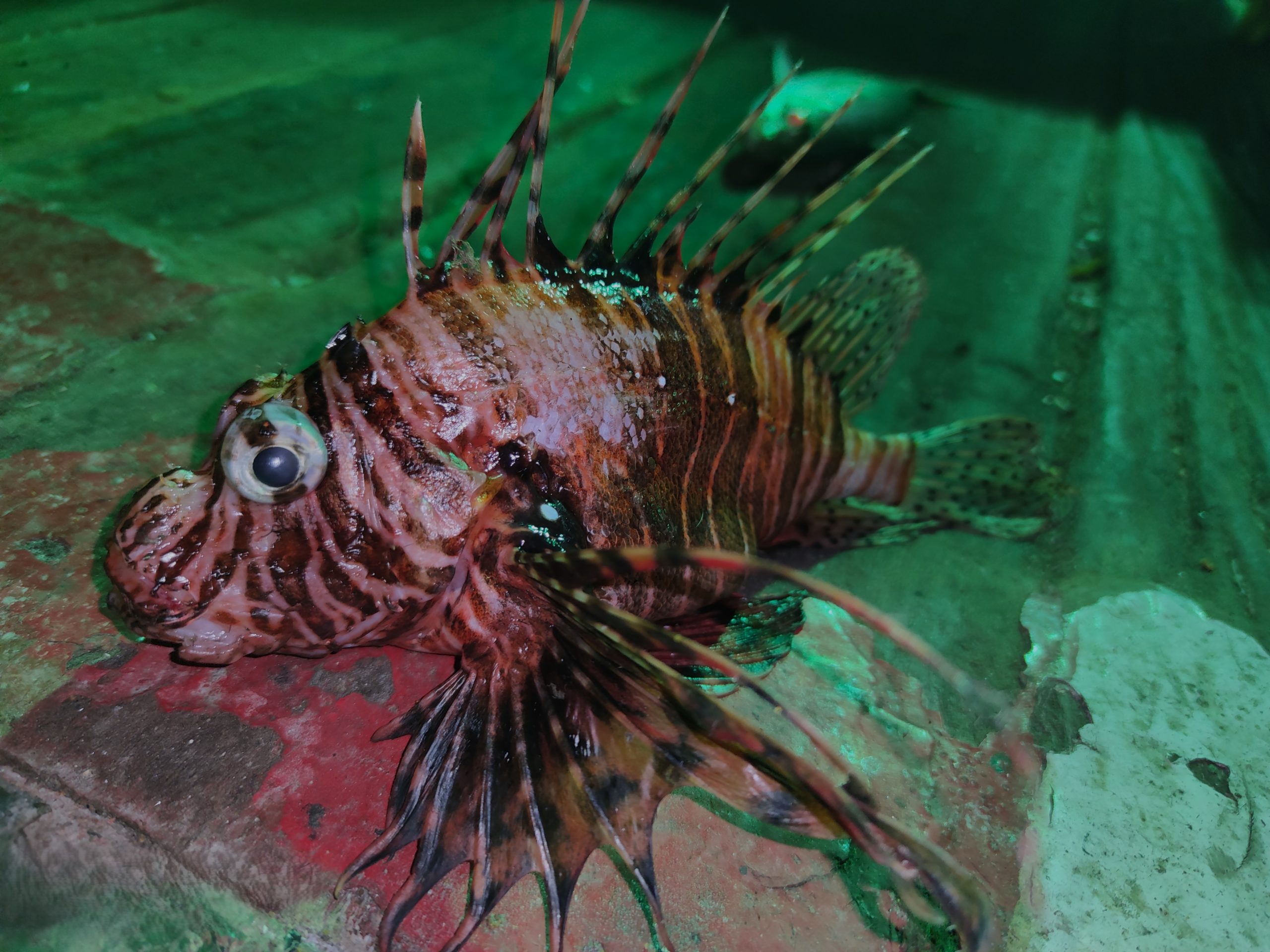Eating fishes or products made from them is a matter of necessity as well as economics for a great many beings across this planet. There are well over thirty thousand species of fish in both seawater and freshwater on Earth’s surface.
Here are some of the most Deadliest Fishes around thew world:
Puffer Fish
The blowfish, also known as the puffer or swellfish, encompasses a diverse group of approximately 90 fish species within the Tetraodontidae family. Renowned for their unique ability to inflate themselves drastically with air and water when agitated, they assume a globular shape. Puffers inhabit warm and temperate regions worldwide, predominantly in marine environments but occasionally in brackish or freshwater habitats. Characterized by robust, often spiky skins and fused teeth forming a beak-like structure with a central split in each jaw, these fish can reach lengths of up to 90 cm (3 feet), although most are smaller.
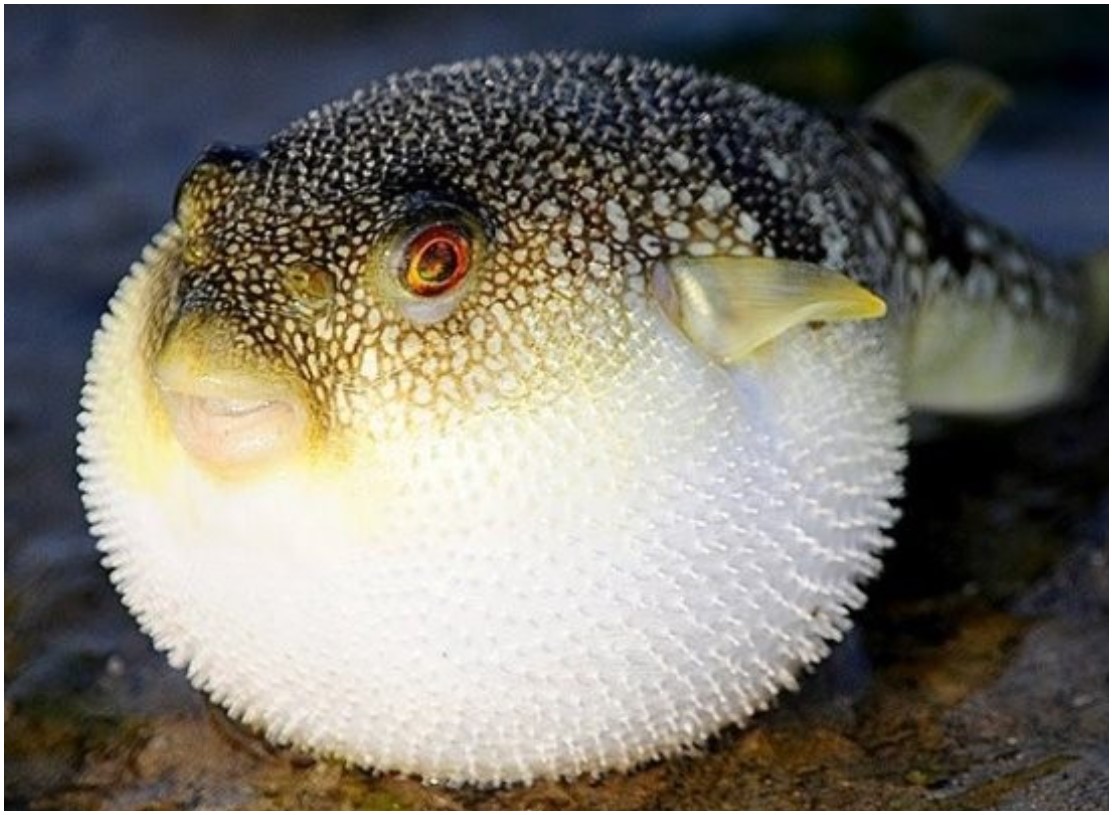
Many species of puffers are toxic, with a highly concentrated poisonous substance known as tetraodontoxin primarily found in their internal organs. Despite the risks, puffers are occasionally consumed as food. In Japan, where they are referred to as fugu, meticulous cleaning and preparation by a specially trained chef are essential to mitigate the dangers associated with their consumption.
Red Lionfish
Red Lionfish, belonging to the Pterois genus, represent a group of vibrant Indo-Pacific fish species within the scorpion fish family, Scorpaenidae (part of the Scorpaeniformes order). They are renowned for their venomous dorsal spines, capable of inflicting painful, albeit rarely fatal, puncture wounds. These fish boast enlarged pectoral fins and elongated dorsal spines, each species adorned with distinctive, zebra-like stripes. When agitated, lionfish expand and flaunt their fins and, if provoked further, may unleash an attack with their dorsal spines.
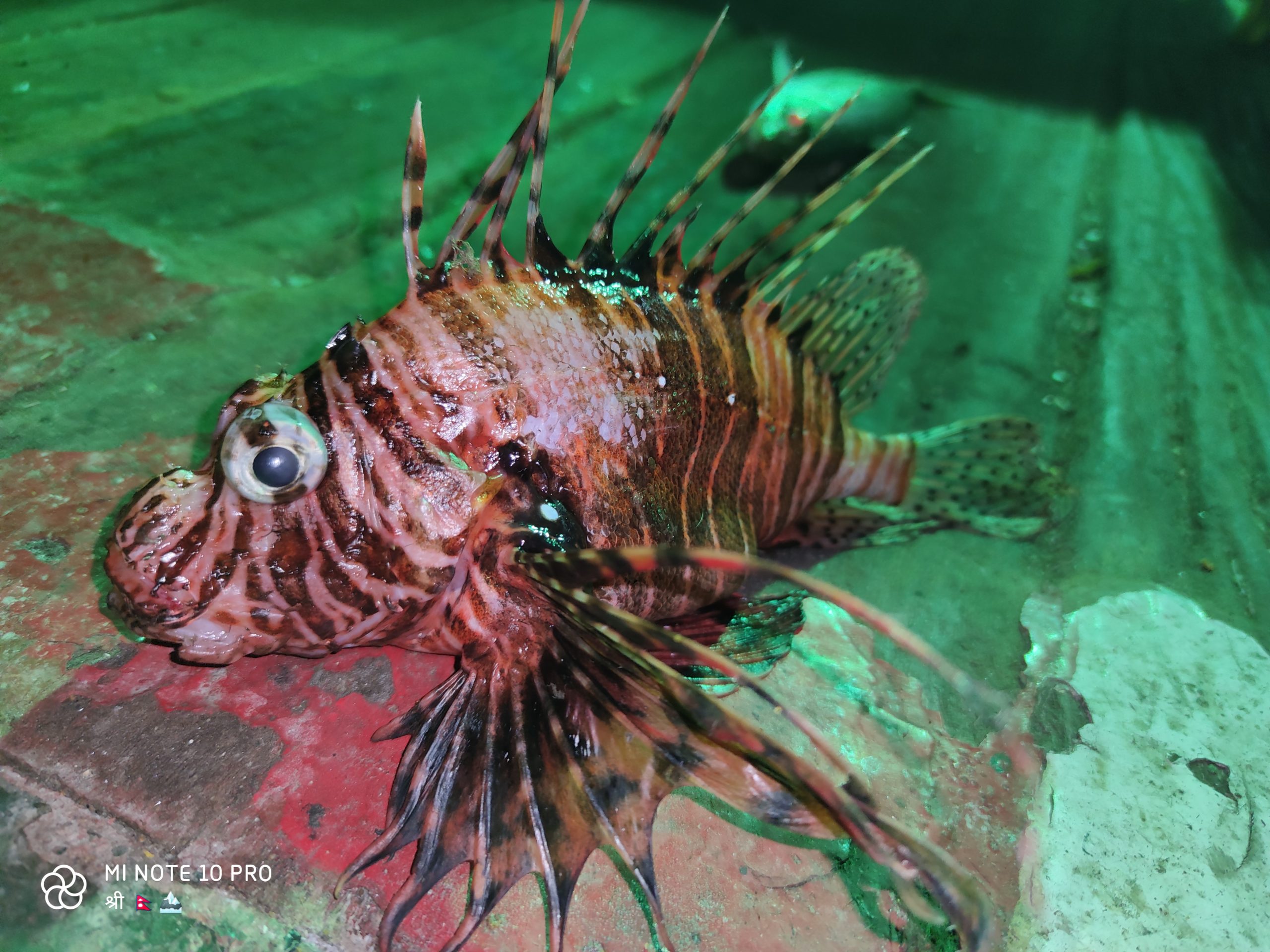
Among the most well-known varieties is the red lionfish (Pterois volitans), a striking fish occasionally favored by aquarium enthusiasts. Adorned with red, brown, and white stripes, it reaches lengths of about 30 cm (12 inches). Originally native to South Pacific reef ecosystems, the red lionfish established itself in reef habitats along the Eastern Seaboard of the United States, the Gulf of Mexico, and the Caribbean Sea in the early 21st century.
Its rapid reproductive rate, coupled with the absence of natural predators in these regions, led to its decimation of local reef fish populations, earning it the label of an invasive species. Wildlife managers suspect that lionfish were intentionally released into the ocean by pet owners along Florida’s Atlantic coast beginning in the 1980s. However, damage inflicted on pet stores by Hurricane Andrew in 1992 may have also facilitated their escape.
Candiru
The candiru, scientifically known as Vandellia cirrhosa, is a scaleless, parasitic catfish belonging to the Trichomycteridae family, prevalent in the Amazon River basin. This creature is translucent, resembling an eel, and typically reaches a length of approximately 2.5 cm (1 inch). Feeding exclusively on blood, the candiru commonly inhabits the gill cavities of other fish species. On occasion, it may also target humans, gaining notoriety for its tendency to invade the urethras of bathers and aquatic animals. Once lodged in the urinary tract, the candiru deploys the short spines on its gill covers, potentially causing inflammation, hemorrhage, and even fatality to the unfortunate victim.
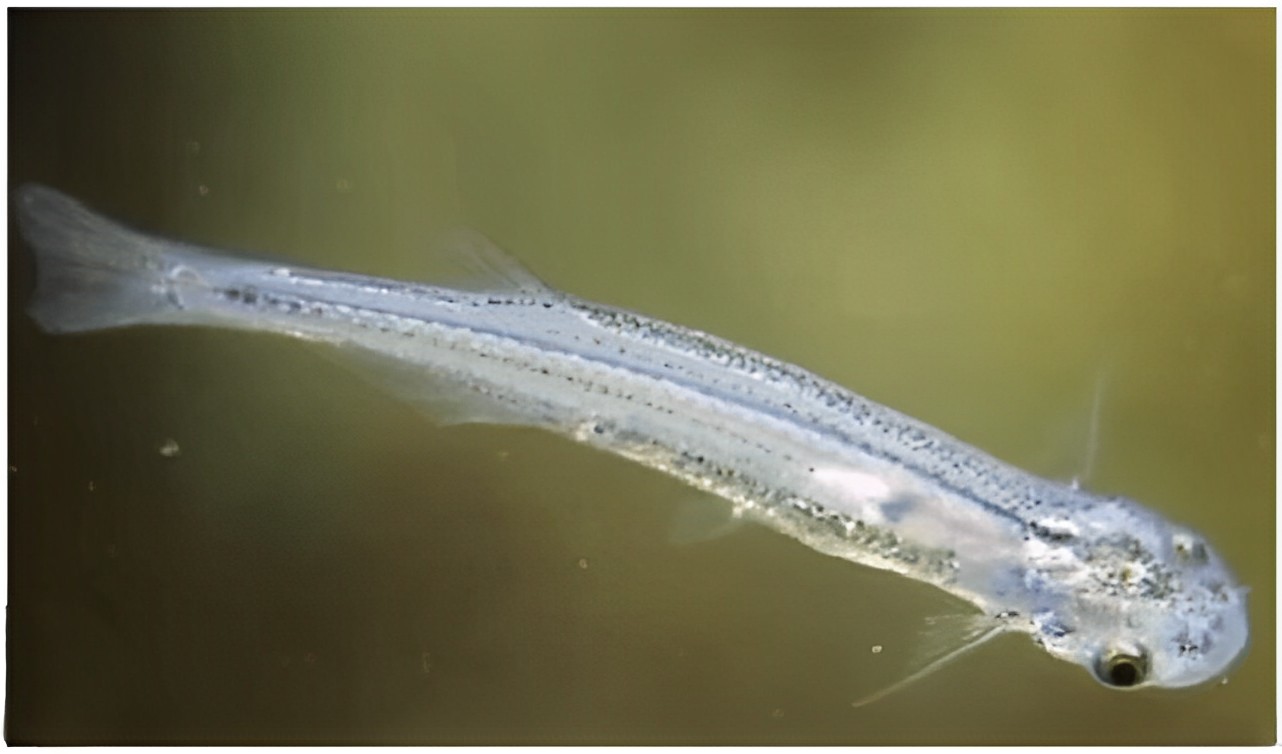
Great White Shark
The great white shark, scientifically known as Carcharodon carcharias, and commonly referred to as the white pointer or simply great white, is perhaps the most iconic and potentially perilous predatory shark worldwide. Garnering notoriety as the antagonist in films like Jaws (1975), this apex predator instills fear and fascination in the public consciousness, yet much remains unknown about its behavior and ecology. Fossil evidence suggests that the modern species emerged roughly 18–12 million years ago, during the middle of the Miocene Epoch, with ancestral roots dating back to at least the Eocene Epoch, around 56–34 million years ago.

In regions where they are prevalent, great white sharks are implicated in numerous unprovoked, and occasionally fatal, attacks on swimmers, divers, surfers, kayakers, and even small vessels. Typically, a great white shark inflicts a single bite on its human target before withdrawing, often without returning for subsequent attacks. While victims of moderate bites may have the opportunity to seek refuge, severe bites can result in extensive tissue and organ damage, potentially leading to fatality. Studies of white shark attacks along the western United States coast reveal a fatality rate of approximately 7 percent, while data from locations such as South Africa indicate rates exceeding 20 percent. In Australian waters, fatality rates as high as 60 percent have been documented.
Many researchers speculate that human attacks by great white sharks stem from curiosity, while others suggest that these incidents may occur due to mistaken identity, with humans being misidentified as natural prey such as seals and sea lions. Additionally, some theorize that white sharks may target humans in areas where their typical prey is scarce.
Moray Eel
There are likely over 80 varieties of moray eels, spanning all tropical and subtropical oceans, where they inhabit shallow waters amidst reefs and rocky formations, seeking refuge in crevices. Distinguished from other eel species by their small, circular gill openings and typically lacking pectoral fins, moray eels boast thick, smooth, scale-free skin. Their wide mouths house formidable, sharp teeth, facilitating the capture and retention of prey, primarily other fish, and enabling them to inflict severe injuries on adversaries, including humans. While moray eels are prone to attack only when provoked, their aggression can be quite fierce.
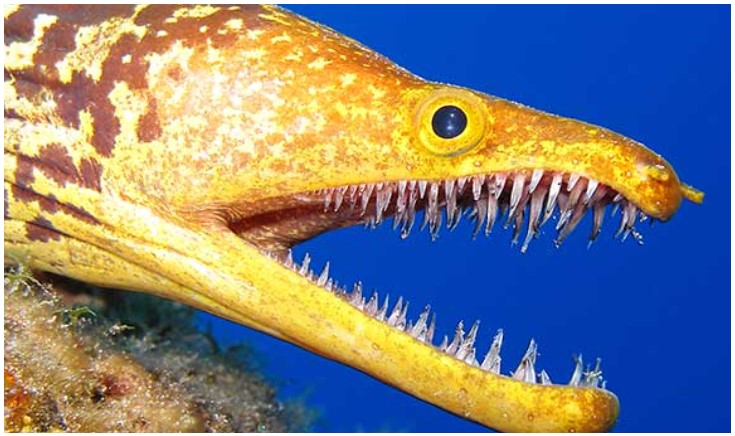
Moray eels often exhibit striking patterns or vibrant hues. Generally, they measure no more than approximately 1.5 meters (5 feet) in length, although a particular species, Thyrsoidea macrurus, found in the Pacific, may reach lengths of up to 3.5 meters (11.5 feet). While moray eels are consumed in certain regions, caution is warranted as their flesh can be toxic, leading to illness or fatality. Muraena helena, a species native to the Mediterranean, was esteemed as a delicacy by ancient Romans and even cultivated in coastal ponds by them.
Tigerfish
Embracing multiple species, tigerfish earn their moniker from their feisty demeanor when hooked, their aggressive hunting habits, or their striking appearance. In the freshwatere realms of Africa, tigerfish belonging to the Hydrocynus genus (sometimes Hydrocyon) stand ad prized catches among anglers, hailing from the characin family, Characidae (part of the Cypriniformes order).
These swift, carnivorous creatures, resembling salmon, sport one or several dark, longitudinal stripes, boasting dagger-like teeth that protrude even shwen their mouth s sre shut. With approximately five species identified, the largest, H. goliath, can surpass 1.8 meters (6 feet) in length and weigh over 57 kg {125 pounds}. Conversely, the smaller H. vittatus is revered as one of the premier game fish globally.
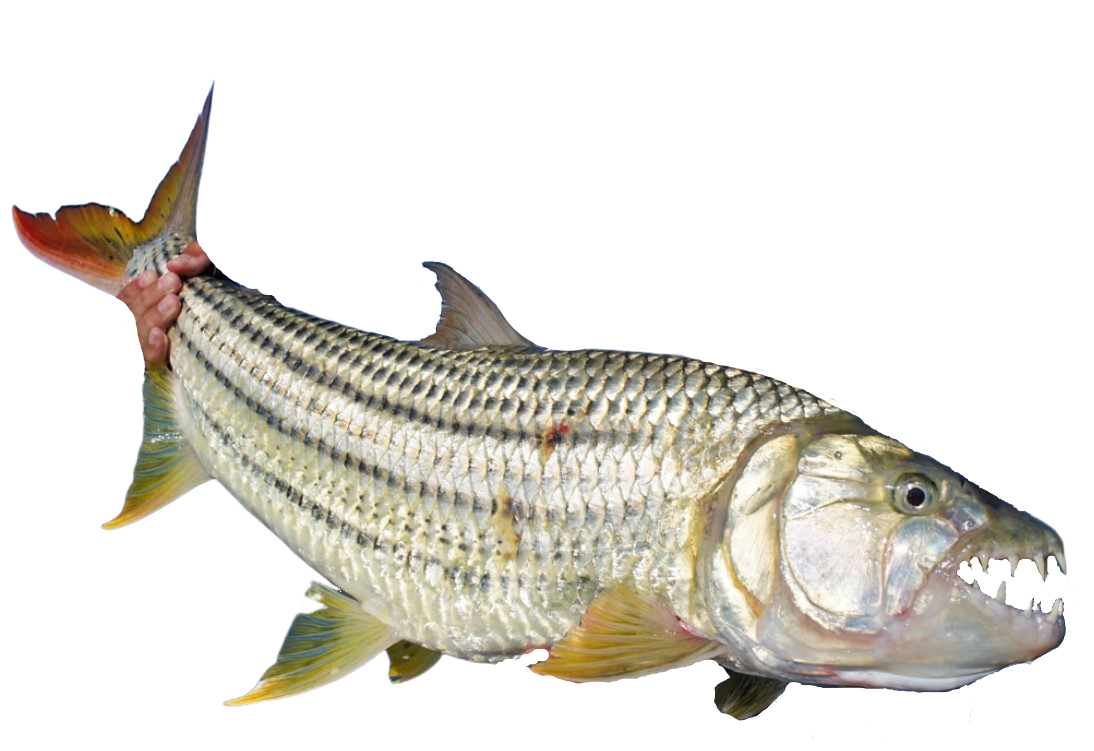
Across the Indo-Pacific region, tigerfish, whether dwelling in marine or freshwater habitats, belong to thee Theraponidae family [within the Perciformes order]. These specimens are generally diminutive in size and often adorned with striking stripes. The three-striped tigerfish (Therapon jarbua), characterized by its bold vertical markings, measures around 30 cm (12 inches) long. Careless handling can result in injury, as it possesses sharp spines on its gill covers.
Piranha
Piranha fish is also known as caribe or piraya, encompass over 60 varieties of sharp-toothed carnivorous fish inhabiting the rivers and lakes of South America, often portrayed with exaggerated ferocity in films like Piranha (1978). While some species have garnered infamy as indiscriminate predators, the reality is that most are either scavengers or herbivores.
Typically not exceeding 60 cm (2 feet) in length, piranhas exhibit diverse colors ranging from silver with orange undersides to nearly pitch black. Possessing deep bodies, serrated undersides, and robust, blunt-headed frames adorned with powerful jaws, they boast triangular teeth capable of delivering a scissor-like bite.

Occurring from northern Argentina to Colombia, piranhas thrive most abundantly in the Amazon River, boasting a repertoire of 20 distinct species. Foremost among them is the notorious red-bellied piranha (Pygocentrus nattereri), armed with the strongest jaws and sharpest teeth. During low water periods, these predators, reaching lengths of up to 50 cm, band together in groups exceeding 100 individuals for hunting excursions.
Species such as the lobetoothed piranha [P. denticulate] and the San Francisco piranha [P. piraya] pose threats to humans, particularly in their respective habitats. Nevertheless, most piranha species seldom attack large animals, with human encounters remaining uncommon. Despite their attraction to blood, piranhas primarily scavenge rather than actively hunt. Notably, the wimple piranhas, comprising 12 species under the genus Catoprion, subsist solely on nibbles from the fins and scales of other fish, allowing their prey to recuperate fully.
Stonefish
Stonefish, classified in the genus Synanceja and the family Synancejidae, are venomous marine creatures found in the shallow waters of the tropical Indo-Pacific. These sluggish, bottom-dwelling fish inhabit rocky areas, coral reefs, mud flats, and estuaries. With thickset bodies, large heads, small eyes, and bumpy skins adorned with wartlike lumps and occasional fleshy flaps, they blend seamlessly into their surroundings.
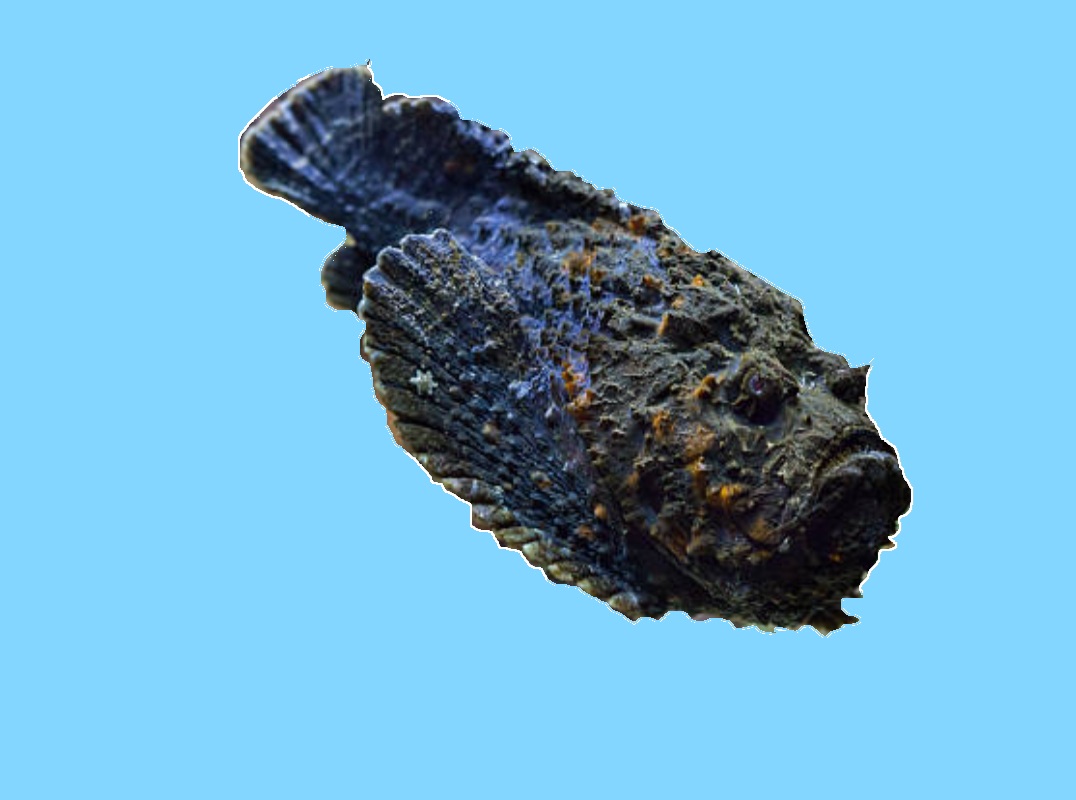
Despite their seemingly harmless appearance, they pose a significant threat. Often difficult to spot, they possess venomous dorsal-fin spines capable of injecting potent venom when disturbed, resulting in excruciatingly painful wounds, sometimes leading to fatality. The family Synancejidae encompasses several other venomous species, though none are as notorious as the stonefish.
Electric Eels
The Electric Eel (Electrophorus electricus) is a fascinating South American fish renowned for its ability to emit a potent electric shock, primarily employed to immobilize its prey, typically other fish. With its elongated, cylindrical, and scaleless body, often sporting a gray-brown coloration occasionally with a reddish underside, the electric eel can reach impressive dimensions, measuring up to 2.75 meters in length and weighing as much as 48.5 pounds. Interestingly, the tail segment comprises approximately four-fifths of the electric eel’s total length, bordered along the underside by a rippling anal fin utilized for propulsion.
Despite its moniker, it’s worth noting that the electric eel isn’t a true eel but rather shares lineage with characin fish, including piranhas and neon tetras. Renowned as one of the primary aquatic predators inhabiting the whitewater flooded forests known as varzea. Electric eels have been observed to constitute over 70 percent of the fish biomass in typical varzea environments. These creatures prefer slow-moving freshwater habitats, where they surface periodically to gulp air, leveraging their mouth’s rich blood vessel network as an auxiliary lung.
Also Read: Most Poisonous Mushrooms in the World

The electric eel’s propensity for stunning its prey likely evolved as a defensive measure to shield its sensitive mouth from potential harm inflicted by thrashing, often spiky, prey. By delivering a shock, the eel renders its victim incapacitated long enough to be ingested directly into the stomach. In some instances, the electric eel opts to outpace its prey rather than stunning it, engulfing it before the prey can react. Moreover, the eel’s electric discharges serve multiple purposes, including preventing prey from fleeing and eliciting involuntary movements in concealed prey, facilitating their detection.
Within the tail segment reside the electric organs, derived from muscle tissue innervated by spinal nerves, capable of emitting discharges ranging from 300 to 650 volts—a forceful charge potent enough to startle even humans. These organs not only aid in navigation but also facilitate communication with fellow electric eels.
If you have any message or suggestion, please comment or sent the mail to sharpinn.com.
